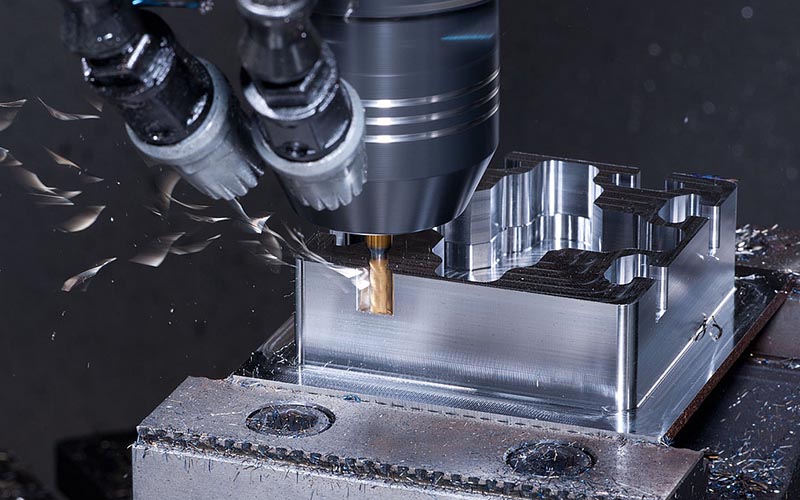
Either CNC milling or manual milling is a machining process used to process prismatic parts. The milling tools with rotating cylindrical heads and a plurality of chip grooves are usually called end milling cutter or vertical milling cutter, which can move along different axes and be used to machine long and narrow air, groove, external contour, etc. The machines used for milling are called milling machines, CNC milling machine is usually an Computer Numerical Control (CNC) machining center. Milling includes manual milling and CNC milling, which are carried out in the machining workshops.
- CNC milling process has good adaptability and flexibility during parts machining , it’s able to process parts with particularly complex contour shape or sizes/tolerances which are difficult to control, such as mold parts, shell parts, etc.
- High production efficiency.
- CNC milling is able to process parts that cannot be machined or are difficult to be machined by ordinary mill machines, such as complex curve parts described by mathematical models and parts with 3D space curved surfaces.
- CNC milling is able to machine parts which need multiple machining processes after one time of clamping and positioning.
- High processing precision, stable and reliable processing quality.It has high machining precision, stable & reliable machining quality.Pulse equivalent of numerical control(NC) devices are generally 0.001mm,NC machining also avoids operator errors additionally.
- It reduces the operators’ labor intensity by its high degree of automatic production, so CNC milling is conducive to automation for production management.
- In the cutting principle, both end milling and peripheral milling are intermittent cutting processes, it is different from CNC turning which has continuous cutting pricess, so tools are required have high performances, with good impact resistance, toughness and wear resistance.In dry cutting condition, good red hardness is also required.
